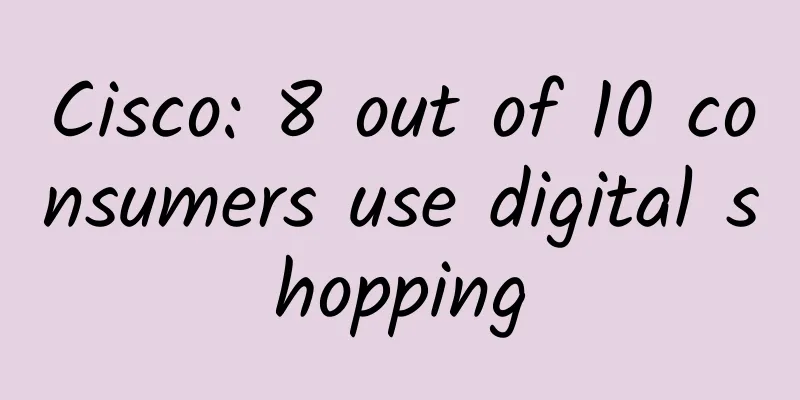Cisco: 8 out of 10 consumers use digital shopping

|
Faced with the continued rise of the e-commerce boom, retailers will also begin to reshape the shopping experience of their offline consumers. In a research report released by Cisco today, it was found that digital content from the Internet is the most important factor affecting the purchasing decisions of most consumers in all channels. In Cisco's annual third quarter consumer research report, it is shown that the merchant's rating and user's comments will be the most powerful basis for users to make purchasing decisions. Consumers are eager to access digital information about products through various devices when shopping in stores. The research report recommends that retailers display digital information to consumers in various ways, which is conducive to better guiding customers' purchasing behavior and increasing store sales. According to a study by Cisco Internet Business Solutions Group (IBSG) titled "Capturing and Retaining Digital Consumers," which examines technology-based shopping behaviors and their impact on the retail industry, most consumers believe that the "digital retail market" has an advantage over many retailers. Consumers want retail stores to communicate with their favorite websites. Two-thirds of consumers are interested in retail stores with personalized shopping experiences, and 85% of consumers like to access digital content in stores by themselves. One-third of users will use mobile search to guide their purchasing decisions. This is a 20% increase compared to last year. Cisco and its partners are offering streaming, interactive digital service platforms, video collaboration and cloud computing solutions that will help retailers provide consumers with a faster and more engaging shopping experience. At the National Retail Federation and Expo (Booth No. 252) this week, Cisco will showcase several new solutions for retailers. Highlights Cisco surveyed 5,000 consumers in five countries: the United States, the United Kingdom, Brazil, Mexico and China. The main findings of the survey of some American consumers include: Consumers are eager to access digital information about products in-store
Online resources have had a significant impact on consumers’ purchasing decisions
How to stimulate consumers' purchasing desire: Self-service and personalized services that can access information through mobile terminals
Cisco also tested consumers' interest in several key digital service content. About 50% of respondents indicated that they were very interested in personal mobile shopping, interactive experience design, touch screen devices to help product selection and automatic ranking of consumers' online orders. The following service concepts will be presented by Cisco at the National Retail Federation Conference and Exhibition:
Supporting Quotes:
199it compilation and analysis: Aimee @cisico |
<<: Econsultancy: 90 years of wisdom on improving conversion rates
Recommend
The efficacy and function of wintersweet
Do you know wintersweet? It is a common Chinese m...
Scientists discovered a galaxy with a huge hole. Could it be the remains of a violent "war"?
All current scientific observations and discoveri...
[Popular Science of Chinese Military Technology] How can “smart” AI improve the accuracy of intelligent aiming in combat?
As we enter 2023, AI technology continues to deve...
The efficacy and function of Lulang Chicken
Lulang chicken, a traditional Chinese medicine, i...
The effect of drinking gentian soaked in water
Gentiana may be very unfamiliar to most friends w...
The efficacy and function of hanging gold lanterns
Hanging Golden Lantern is a common Chinese medici...
The efficacy and function of the unique flavor
Recently, major TV channels have launched various...
The efficacy and function of gentian
Most Chinese medicinal materials have good effect...
What are the effects of angelica?
Angelica is a kind of traditional Chinese medicin...
Why does the dragon raise its head on February 2?
This article was reviewed by Shao Lin, a popular ...
The efficacy and function of chicken claw bark
There are so many medicinal herbs in the world, a...
Golden lotus hurts the kidneys
The plant nasturtium can be used as a Chinese med...
These strange-looking "lumps" turned out to be the weights used by ancient people!
A set of bronze weights from the Yuan Dynasty, ra...
Typhoon "Little Dog" + cold air, be careful on your return trip!
As the holiday draws to a close, precipitation in...
He was proficient in everything from philosophy to aerospace, and he spoke up for "Beidou" at the last moment of his life!
He is One of the four advocates of the famous &qu...


![The efficacy and function of dragon claw beans [picture]](/upload/images/67ca40a6e0d7c.webp)






